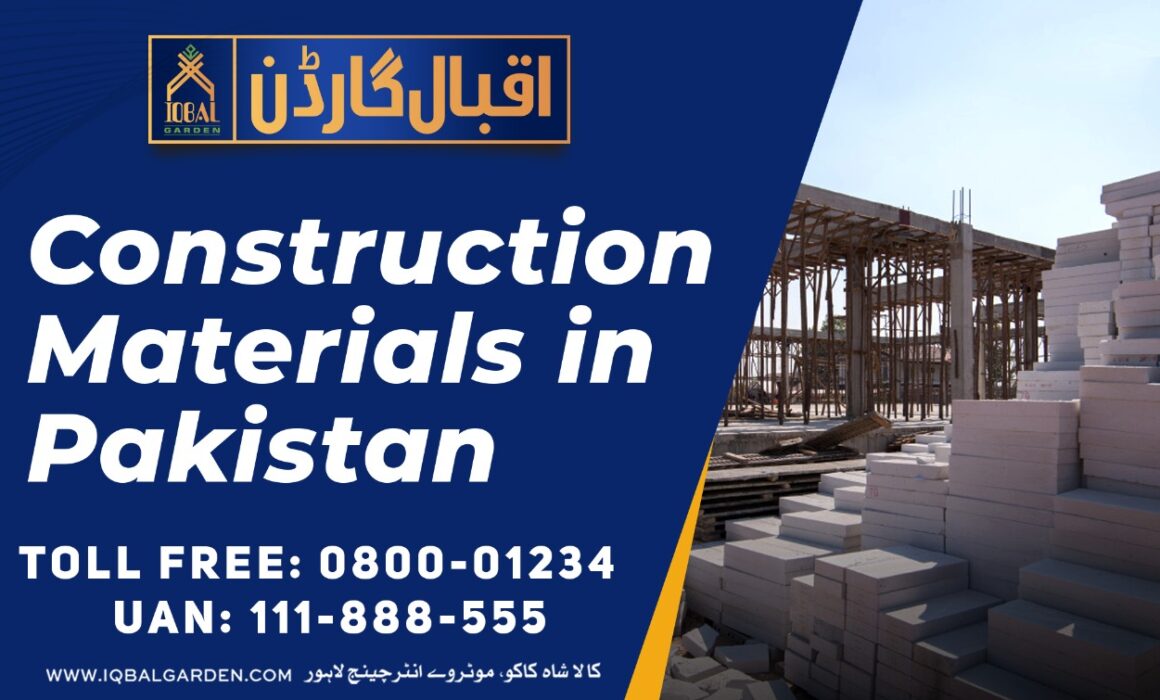Building Materials | Construction Material Prices in Pakistan
What are Building Materials?
“building material” refers to any substance suitable for constructing a home, business, or other structure.
Construction materials are essential for any home or business. Various materials can be used for construction, and choosing the right one for the project is necessary.
It is typically concrete, wood, bricks, aggregates, clay metal, and numerous other materials. In the past, people used only bricks made from straw or wood.
However, in the present day, engineers have learned to mix and match the most appropriate materials to build better-quality structures.
However, the decision will always be based on the customer’s budget and the efficiency of the materials employed in construction projects.
As mentioned earlier, natural materials widely used in construction, such as clay, sand, wood, rocks, leaves, and twigs. These materials are commonly used in today’s construction industry, particularly in America, where most homes are built from wood.
Various artificial materials have been introduced in the past few years.
A majority of the building materials used today do manufacture. It is well-established across many countries. It indicates that it is a good way of construction, and construction will be vital for a long time.
Other related speciality trades have also benefited from producing building materials like tiling, roofing, plumbing, carpentry, and insulation work.
All construction materials can utilize to construct a high-quality structure. However, it is dependent on how they use in the construction. That’s why field engineers and project managers must carefully consider the material they need for their projects.
Construction Material Prices in Pakistan
Pakistan is a country with a rich architectural history. Many of the old city centres in the country are still in use today, and new construction materials are expensive.
Pakistan’s most common building materials include stone, Brick, mortar, and straw. Hence, it is essential to research what you need before purchasing.
Construction materials in Pakistan are expensive and vary depending on the region. The cost of materials depends on various factors, including labour, production, and transport costs. In general, construction materials in Pakistan are more expensive than those in other countries.
Construction Materials Price
| Image | Name | Price | Unit | Updated On |
| Bricks- ( B Class ) | 13.50 | Each | 2023 | |
| Bricks-Awal ( A Class Machine Made ) | 14.00 | Each | 2023 | |
| Bricks-Awwal ( A Class ) | 14.50 | Each | 2023 | |
| Bricks-Awwal ( A+ Class ) | 15.00 | Each | 2023 | |
| Bricks-Awwal Tiles ( A Class ) | 14.50 | Each | 2023 | |
| Bricks-Ballast ( Rora ) | 70.00 | Cubic Ft. | 2023 | |
| Bricks-Khanggar ( C Class ) | 12.50 | Each | 2023 | |
| Cement-Power OPC | 1075.00 | Bag | 2023 | |
| Cement-Bestway OPC | 1115.00 | Bag | 2023 | |
| Cement-Cherat | 1095.00 | Bag | 2023 | |
| Cement-DG OPC | 1125.00 | Bag | 2023 | |
| Cement-Fauji OPC | 1105.00 | Bag | 2023 | |
| Cement-Flying OPC | 1080.00 | Bag | 2023 | |
| Cement-Lucky OPC | 1110.00 | Bag | 2023 | |
| Cement-Maple Leaf OPC | 1135.00 | Bag | 2023 | |
| Crush-Deena Bajar (1 Inch-1.25 Inches) | 95.00 | Cubic Ft. | 2023 | |
| Crush-Margalla | 138.00 | Cubic Ft. | 2023 | |
| Crush-Mix Bajar (Kaccha) | 125.00 | Cubic Ft. | 2023 | |
| Crush-Sargodha Bajri (4 Sooter Or 15-20mm) | 130.00 | Cubic Ft. | 2023 | |
| Sand-Chenab | 60.00 | Cubic Ft. | 2023 | |
| Sand-Ghassu (Slit Sand) | 28.00 | Cubic Ft. | 2023 | |
| Sand-Ghazi | 110.00 | Cubic Ft. | 2023 | |
| Sand-Lawrencepur | 105.00 | Cubic Ft. | 2023 | |
| Sand-Ravi | 42.00 | Cubic Ft. | 2023 | |
| Steel-Bar 60-Grade AF Steel | 300.00 | Kg. | 2023 | |
| Steel-Bar 60-Grade Amreli Steel | 310.00 | Kg. | 2023 | |
| Steel-Bar 60-Grade FF Steel | 305.00 | Kg. | 2023 | |
| Steel-Bar 60-Grade Ittefaq Steel | 300.00 | Kg. | 2023 | |
| Steel-Bar 60-Grade Kamran Steel | 300.00 | Kg. | 2023 | |
| Steel-Bar 60-Grade MS Steel | 302.00 | Kg. | 2023 | |
| Steel-Bar 60-Grade Mughal Steel | 310.00 | Kg. | 2023 | |
| Steel-Bar 60-Grade Saeed Steel | 300.00 | Kg. | 2023 |
Also, read Aluminum Windows Price in Pakistan 2023
Types of Construction Building Materials
As we mentioned, many building materials do use in every construction project. We’ll explore each one and its use for a construction project.
Natural Materials
The construction materials can be classified into two primary sources – the first one is natural, and the other is synthetic.
Natural construction materials are the ones that are not minimally processed, such as glass or lumber.
However, synthetic construction materials do produce. Examples include paints made of petroleum and plastics.
In addition to lumber, mud, stone, and fibrous plant materials are the most commonly used materials for building houses.
Builders typically use all the construction materials and methods for homes that can withstand the weather in your area.
In general, stone utilizes as the main building element.
And mud did use as a filler for the gaps between the two.
In contemporary construction, stone is the natural alternative to bricks, and hollow blocks and mud are the cement alternatives. Additionally, mud serves as natural insulation for the structure.
A good illustration of a structure constructed with natural materials includes the wattle and daub, which wet soil, sand straw, clay, and animal dung utilize to build the system.
Building Material: Fabric
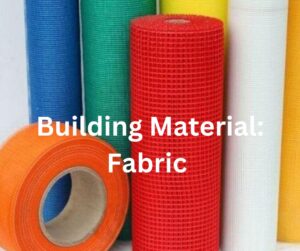
Tents were top-rated in the past to provide shade and be the residence of nomadic people. Fabrics for construction were in for a long time.
Thanks to the advancement of tensile structure or synthetic fabric, contemporary canopies on large buildings are now constructed with flexible material supported by steel cables.
What are the uses of fabric in the construction industry?
The fabric of the building serves to protect the building’s inhabitants from weather conditions, including rain, wind or sunlight, snow, and other elements.
What is the meaning of fabric structure?
Fabric structures are objects made from fabric, either with or without a frame. The technology offers end-users a range of beautiful free-form designs for the building.
Are cloth buildings good?
Fabric structures can be the perfect alternative to brick-and-mortar structures in nearly any scenario. Most provide long-lasting, durable shelter and commercial, residential, and industrial amenities.
Building Material: Clay and Mud

As we said earlier, clay and mud are natural building materials used in modern times. The quantity of clay or mud utilized in construction results in various styles of buildings, so when looking for flexibility for your designs, mud and clay are the best choices.
The most critical factor in determining the quantity of each material used is the quality of the soil used. The more significant amounts of clay can create adobe homes. However, smaller pieces of clay soil are used to construct sod.
Along with your soil type, the quantity of grass, sand, and straw, gravel will affect the clay structure you build. Rammed earth used to construct walls was created by compressing clay between wood planks by hand. In the present day, an electric, pneumatic compressor is utilized in the process of processing clay to produce more solid Rammed earth.
One of the reasons that clay and mid are utilized today is due to their thermal mass. Constructions constructed from clay soil are excellent in summer and warm in winter. Clay is known for its ability to hold cold or heat, functioning as an HVAC system that is naturally occurring.
Cob Sod, adobe, and cob houses are common in the southwest region or the northern and western parts of Europe. Although most European countries have wet conditions yearly, those dwelling designs remain remarkably functional after centuries. It is why specific modern sustainable structures are incorporating sod techniques.
Building Material: Rock

The use of rocks can be traced back to the earliest times. The Egyptian civilization, specifically those of the Pyramids, was built out of rock. It’s among the longest-lasting materials, so even though there aren’t any cave-style rock homes, they are still used in construction as components or materials. The fact that it’s readily available makes it a much less costly material to purchase.
However, there are numerous kinds of rock, each with different characteristics. Therefore, before using gemstones in your home, you must ensure you’re purchasing a top-quality stone.
Rock is generally highly dense, making it an excellent protectant material. The weight and energy density are its main drawbacks, as it can be challenging to keep rocks warm.
In the earlier days, a mortar was utilized to keep stones in place; cement is the material most commonly employed presently.
In the United States, rock structures are rare. However, they are a part of the U.K.’s granite-strewn uplands, which are part of Dartmoor National Park in Europe. Granites that were loose were used to build circular huts that were in use until the Bronze Age. Today, just the remnants of 5,000 granite houses are visible. Slate roofing is becoming more popular in the U.K. nowadays.
Building Material: Thatch

It is also a traditional building material since it is available and can be easily collected. It doesn’t even require different collection and transport equipment. The main benefit, however, it’s insulation capabilities.
African tribes have lived in houses entirely constructed of grasses. In Europe, as well as some Asian countries, the use of thatch roofs was once commonplace until industrialization introduced superior roofing materials that can use even in the wet season.
While thatch roofs are getting a new lease of life in the Netherlands, they’re not used in any building or architectural venture in the United States.
Building Material: Brush

Native Americans used to build brush structures to rest and for living. They are constructed entirely from twigs, leaves, branches, and bark.
There aren’t a lot of brush houses anymore due to durability issues. You can, however, imagine one being similar to a beaver lodge.
Building Material: Ice
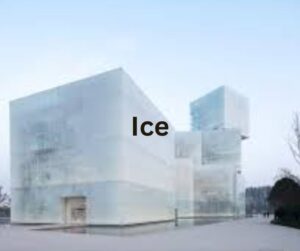
There are hotels made of ice in the northern region, where only a few tourists capable of visiting are captivated by it. In the past, ice was used to create igloos, and there were no other methods to keep them in place. The constant temperature below 0 was the only thing that igloos required for the ice blocks to hold their shape.
Building Material: Wood

It is popular today, particularly in the United States. Both are from large trees, where the trunk is often broken into smaller pieces. The wood was used in its raw form, then tied or notched into to be tucked in. Since the age of architecture and new techniques for construction did introduce, the wood has been cut and then pressed into planks or timber boards and used for ceilings, floors, and cabinetry.
Wood is an unreliable material that can use to construct buildings in just almost every climate. It is flexible and bends but still maintains its toughness.
The quality and longevity of wood vary based on the species that it comes from. Certain species are more potent than others and are obviously costlier. It means that certain species are suitable for some regions of construction. For instance, maple and oak can be used for flooring and cabinets, whereas teak and pine are ideal for walls.
Modern Western homes still use wood because it’s easier to build. It’s also a classic. A few people plan their homes out of wood and incorporate contemporary furniture to make them appear more sophisticated and modern.
Wood Prices in Pakistan:
| Type of Wood | Rate (Per Cft) |
| Ash Wood Price in Pakistan | PKR 10,500 |
| Diyar Wood Price in Pakistan | PKR 8,500 |
| Kail Wood Price in Pakistan | PKR 4,000 |
| Kikar Wood Price in Pakistan | PKR 2,000 |
| Mahogany Wood Price in Pakistan | PKR 8,500 |
| Oud Wood Price in Pakistan | PKR 7,500 |
| Teak Wood Price in Pakistan | PKR 21,000 |
| Yellow Pine Wood Price in Pakistan | PKR 6,000 |
Building Material: Brick and Block
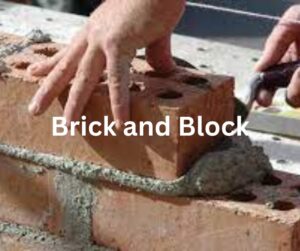
Bricks do construct from kiln-fired materials. In general, clay or shale do use to create bricks. Other people employ mud when more than the budget is needed. However, it’s a little low.
Clay bricks are produced by either moulding or extruding clay using an extruder. They are still used extensively today because Americans are learning to mix bricks and wood, making their homes fireproof. Clay bricks are also less expensive than wood.
In the last decade of the 20th century, clay blocks became a substitute for the cinder block. It is made from concrete and is much more robust. Recently, a lower-cost version of Brick launched. Sandcrete blocks are now one of the options, but clay is typically less sturdy than it is.
Building Material: Concrete
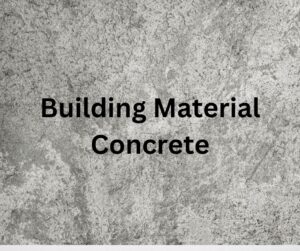
A majority of commercial and industrial structures do construct from concrete. It’s popular because of its durability and strength. It’s a composite material made chiefly from aggregate and cement.
Portland is the most commonly employed concrete today. It comprises minerals like gravel and sand, portland cement, and water to mix, soften and hydrate later.
Concrete, however, has a weak tensile strength. The use of steel rods or rebars usually reinforces it. Thus we get the strengthened concrete constructions.
Air bubbles are the main reason that weakens the concrete. Concrete pouring during construction must treat with consideration. Vibrators are employed to eliminate bubbles that form in the process of pouring.
Building Material: Metal
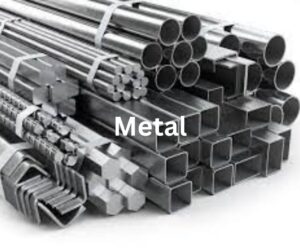
Metal is among the essential materials for constructing modern buildings, such as tall ones. It also uses for wall coverings.
Different kinds of metals can use in construction. Steel, the iron component, is the most prevalent metal employed in construction due to its durability, strength, and flexibility. But, it does damage through corrosion.
Aluminium alloy can utilize to avoid corrosion. It also uses as an alternative. It’s more expensive than steel. However, if you want your structure to be put on the beach, It is more beneficial to utilize aluminium.
Other metals used in building materials include brass, silver, titanium, chrome, and gold. Brass and titanium can be used in construction, whereas other metals are used for ornamental details.
Building Material: Glass

Glass walls, also known as curtain walls, are typical commercial structures. It is cheaper to construct than concrete walls but cannot surpass concrete’s strength and durability. Naturally, modern glasses are processed to increase thickness and strength and can be more durable and easy to maintain. Their style and aesthetics make them popular in building hotels and tall buildings.
In the past, clear glass was employed in windows. They let more light pass through and keep inclement weather out.
Building Material: Ceramics

Ceramics are also popular building materials in the current era. They do utilize flooring as well as countertops, fixtures, as well as walls, and ceilings.
Ceramics were once created by firing clay and pottery in kilns. However, in this age, ceramics are now employed in more and more applications in construction. They are made with more sophisticated processes to increase their strength.
Building Material: Plastic
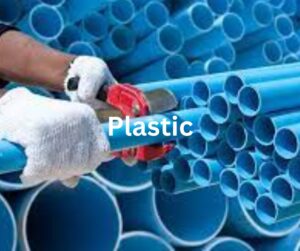
Plastic is commonly used in HVAC, plumbing, and electrical applications as plastic pipes covering wires and metal pipes. It is usually made from semi-synthetic or synthetic organic substances, which can be moulded or extruded to form objects, sheets, or fibres.
Plastics used for building differ in their heat resistance, resilience, and hardness. It is why plastics have their way into most construction tasks, depending on the commission they could use for.
Building Material: Foam
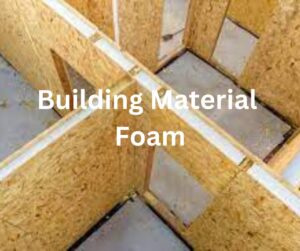
Foamed plastic does typically utilize as an insulator during construction. Certain homes place it between the walls of cement or wood or even on the ceiling to keep cool or warm inside the structure.
In the past, Polyurethane’s use for construction has been restricted.
Building Material: Cement Composites
Cement composites are an exciting new application in 3D construction. In the past years, they only use as binders for fibres or wood.
Cement composites are composed of cement paste that contains hydrated. However, binding wood is challenging because the wood-cement compatibility ratio must determine before constructing the perfect cement paste mix.
Different methods are employed to measure the compatibility of cement and wood. It is a matter of counting the hydration of wood and glue and determining the strength of their morphology, muscles, and interfacial bonds.
New Types of Building Materials
New building materials have been developed to improve the efficiency and performance of buildings. These materials may use to create more efficient and sturdy buildings and reduce their environmental impact.
There are many construction materials available to builders. The most popular materials are wood, plastic, and metal. Each material has its advantages and disadvantages. The choice of construction material is important because it affects the final product.
Positive Effects of Advanced Building Materials
Building materials are an essential component of any home. Using advanced building materials, homeowners can achieve a more efficient and comfortable home. Homeowners can enjoy increased safety, performance, and energy efficiency by choosing suitable materials.
The increasing popularity of advanced building materials has led to various positive impacts on society and the environment. These materials allow for increased flexibility and efficiency in construction and infrastructure.
They have helped reduce the amount of waste produced by traditional construction methods. In addition, advanced building materials are more sustainable than conventional materials, meaning they can last longer and have less environmental impact.
Negative Impacts of Advanced Building Materials
Building materials are an essential part of any home. They provide the foundation for our homes, workplaces, and infrastructure. However, when using advanced building materials like fibreglass, metal, and plastics, there can be negative impacts on the environment. Advanced building materials can release greenhouse gases, which contribute to climate change. They can also create a lot of noise and dust when constructing a home, adversely affecting people’s health. Overall, using advanced building materials should be done cautiously and carefully considering the environment.
Building Products
Construction products come prefabricated and are that are used for construction. They’re already made and assembled in warehouses, so the construction team needs to install them into the structure. They can include cabinets, walls windows, doors, and walls.
The main benefit of building materials is that they will make the team’s job easier and quicker while reducing debris on the construction site.
Final Words
The selection of construction materials is a significant factor in the construction project’s success. They can be the difference between the success and failure of your construction project. Therefore the designers must consider the best materials to complete the project in the planning phase.
Of course, selecting the right provider is vital in getting suitable building materials. Therefore, you should find the top suppliers and collaborate with them to get your materials shipped on the correct date.
Read More About Area Converter, Plots for Sale, and House Building Materials Prices:
Aluminum Windows Price in Pakistan
